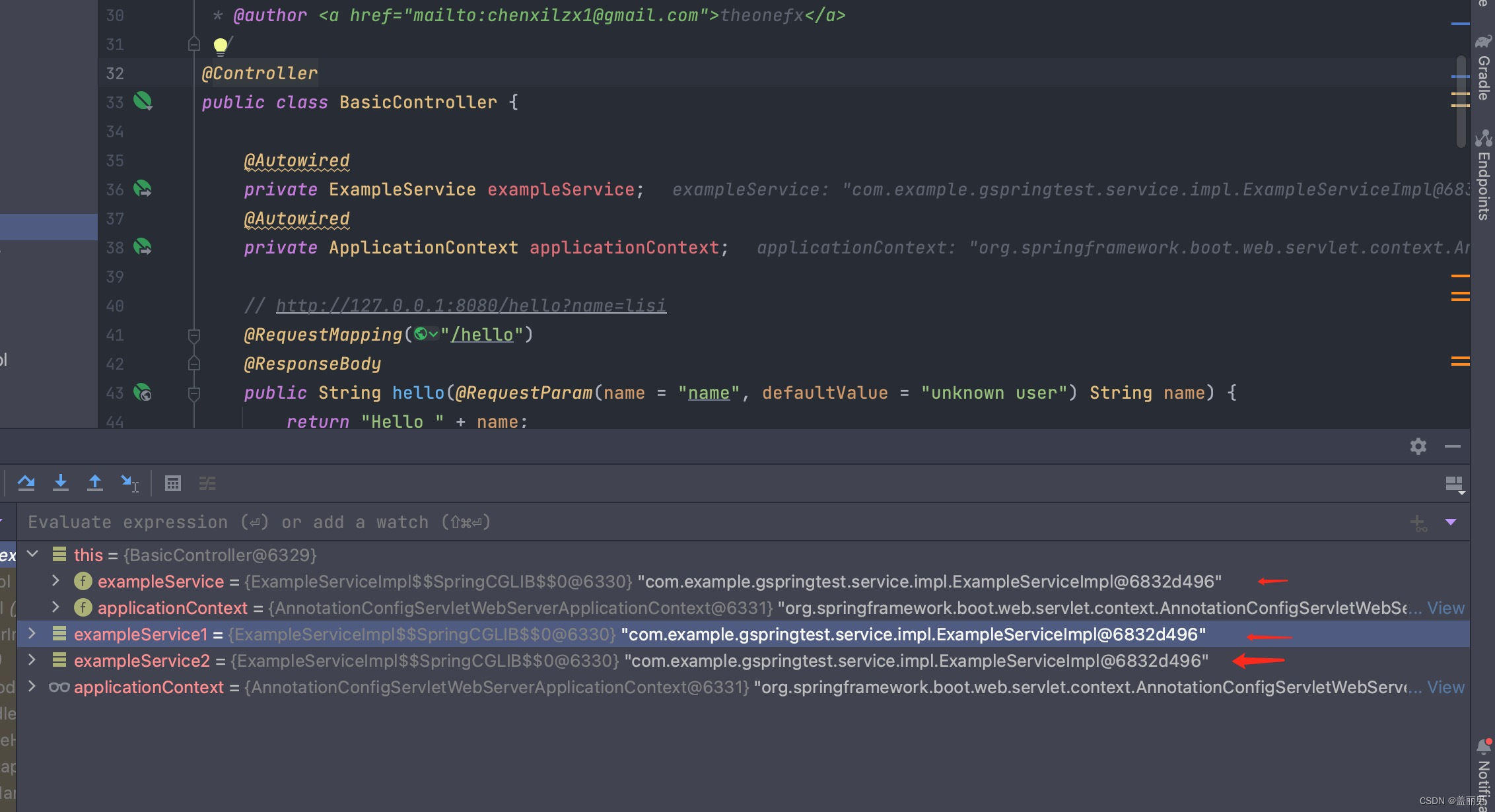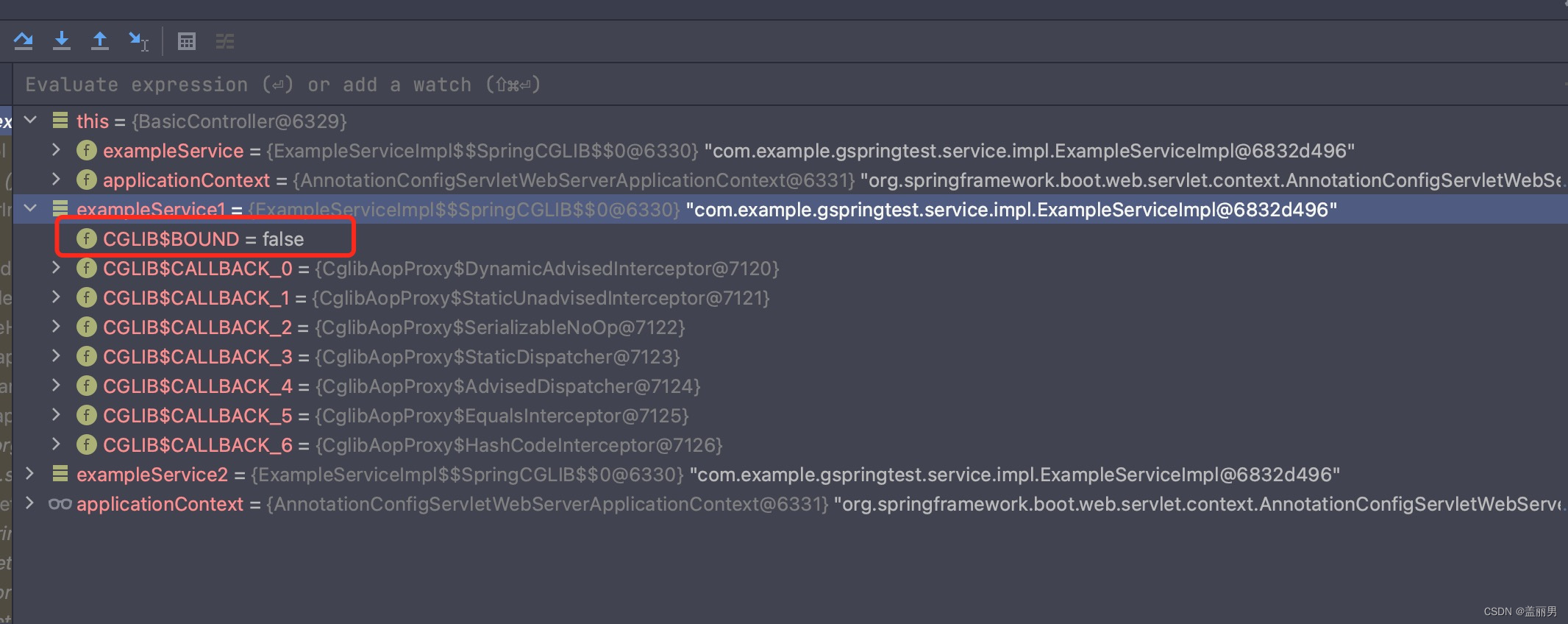引言
之前我们讨论过了HandlerInterceptor,现在我们来看一下MethodInterceptor。
MethodInterceptor是Spring AOP中的一个重要接口,用来拦截方法调用,它只有一个invoke方法。
Spring AOP组成
- Aspect:切面,是一个普通的Java类,里面定义了通知(Advice)和切点(Pointcut)。
- Advice:通知,定义了切面要织入目标对象的具体时机和操作。有前置通知、后置通知、异常通知、最终通知和环绕通知等。
- Pointcut:切点,指明应用通知的具体对象和方法。可以通过表达式或匹配命名规范来指定切点。
- Target:目标对象,被通知和切点织入额对象。
- Weaving:织入,将切面应用到目标对象来创建代理对象的过程。Spring AOP中通常在运行期间通过动态代理来实现。
先看一下Advice
Spring AOP支持5种类型的Advice(通知),执行时机和简单解释如下:
| 通知名 | 执行时机 | 解释 |
|---|---|---|
| @Before | 目标方法执行前 | 在目标方法执行前执行,可以用于方法级预处理 |
| @AfterReturning | 目标方法执行后,且没有异常 | 用于方法后置处理,获取方法返回值等 |
| @After | 目标方法执行后,不论方法异常与否 | 用于资源清理 |
| @AfterThrowing | 目标方法抛出异常后 | 处理方法中抛出的异常 |
| @Around | 环绕目标方法 | 在目标方法执行前后都可以执行自定义操作,并控制目标方法是否执行及其参数 |
这5种Advice的执行顺序如下:
- @Before:前置通知,目标方法执行之前执行
- @Around:环绕通知, encloses 目标方法,在目标方法之前和之后执行自定义操作
- 目标方法执行
- @AfterReturning:返回通知,目标方法成功执行之后执行
- @AfterThrowing:异常通知,目标方法抛出异常后执行
- @After:后置通知,目标方法之后执行
所以总结来说:
@Before,@After在目标方法执行前后一定会执行。
@AfterReturning只有目标方法成功执行后才会执行。
@AfterThrowing只有目标方法抛出异常后才会执行。
@Around会根据是否执行目标方法而在前后执行,还可以控制目标方法的执行。
偷了一张图,可以参考一下:

来源:Spring AOP通知(Advice)详解
示例
我们直接来个例子
pom文件,我用的gradle:
plugins {
id 'org.springframework.boot' version '3.0.2'
id 'io.spring.dependency-management' version '1.1.0'
id 'java'
}
group = 'com.example'
version = '0.0.1-SNAPSHOT'
sourceCompatibility = '17'
repositories {
mavenLocal()
maven { url "https://maven.aliyun.com/nexus/content/groups/public/"}
mavenCentral()
jcenter()
maven { url "https://repo.spring.io/snapshot" }
maven { url "https://repo.spring.io/milestone" }
maven { url 'https://oss.jfrog.org/artifactory/oss-snapshot-local/' }
}
dependencies {
implementation 'org.springframework.boot:spring-boot-starter-web'
testImplementation 'org.springframework.boot:spring-boot-starter-test'
implementation 'org.springframework.boot:spring-boot-starter-aop'
}
service接口和类
public interface ExampleService {
void doSomething();
void doAnything();
void justPlay();
}
@Service
public class ExampleServiceImpl implements ExampleService {
@Override
public void doSomething() {
System.out.println("-----------doSomething ----------");
}
@Override
public void doAnything() {
System.out.println("-----------doAnything ----------");
}
@Override
public void justPlay() {
System.out.println("-----------justPlay ----------");
}
}
切面类:
@Aspect
@Component
public class ExampleAspect {
//只拦截do开头的方法
@Before("execution(* com.example.gspringtest.service.impl.ExampleServiceImpl.do*(..))")
public void beforeMethod() {
System.out.println("Before method");
}
}
测试接口:
package com.example.gspringtest.demos.web;
import com.example.gspringtest.service.ExampleService;
import com.example.gspringtest.service.impl.ExampleServiceImpl;
import org.springframework.beans.factory.annotation.Autowired;
import org.springframework.context.ApplicationContext;
import org.springframework.stereotype.Controller;
import org.springframework.web.bind.annotation.ModelAttribute;
import org.springframework.web.bind.annotation.RequestMapping;
import org.springframework.web.bind.annotation.RequestParam;
import org.springframework.web.bind.annotation.ResponseBody;
/**
* @author <a href="mailto:chenxilzx1@gmail.com">theonefx</a>
*/
@Controller
public class BasicController {
@Autowired
private ExampleService exampleService;
@Autowired
private ApplicationContext applicationContext;
@RequestMapping("/testMethod")
@ResponseBody
public String testMethod() {
exampleService.doSomething();
System.out.println("******************888888888********************");
exampleService.doAnything();
System.out.println("******************888888888********************");
exampleService.justPlay();
// ApplicationContext context = new AnnotationConfigApplicationContext(AppConfig.class);
ExampleService exampleService1 = applicationContext.getBean(ExampleServiceImpl.class);
ExampleServiceImpl exampleService2 = applicationContext.getBean(ExampleServiceImpl.class);
return "Hello " ;
}
}
先来看一下输出
Before method
-----------doSomething ----------
******************888888888********************
Before method
-----------doAnything ----------
******************888888888********************
-----------justPlay ----------
提问
请告诉我,测试接口中的exampleService,exampleService1和exampleService2是同一个bean吗?是代理类还是原对象?
来揭晓一下答案:
首先是同一个bean

其次,只能拿到代理类:

原理
上面讲了这么多,好像跟MethodInterceptor没啥关系啊,我们
先来看几个类:
MethodBeforeAdviceAdapter
执行Before方法
AfterReturningAdviceInterceptor
执行AfterReturning方法
ThrowsAdviceInterceptor
执行AfterThrowing方法
AspectJAfterAdvice
执行Aftor方法
AspectJAroundAdvice
执行Around方法
这几个类都实现了MethodIntercepter,并且分别对应了不同的通知类型。
spring aop为目标对象生成的代理对象是通过实现MethodInterceptor接口来与拦截器协同工作的。
代理对象通过实现MethodInterceptor接口并协调拦截器链,与各MethodInterceptor实现相结合,最终执行完所有相关通知逻辑并将结果返回给客户端。
拦截器链中的每个拦截器通过mi.proceed()调用下一级,并在前/后执行本拦截器的通知逻辑,形成完整的通知调用链。























 289
289











 被折叠的 条评论
为什么被折叠?
被折叠的 条评论
为什么被折叠?










